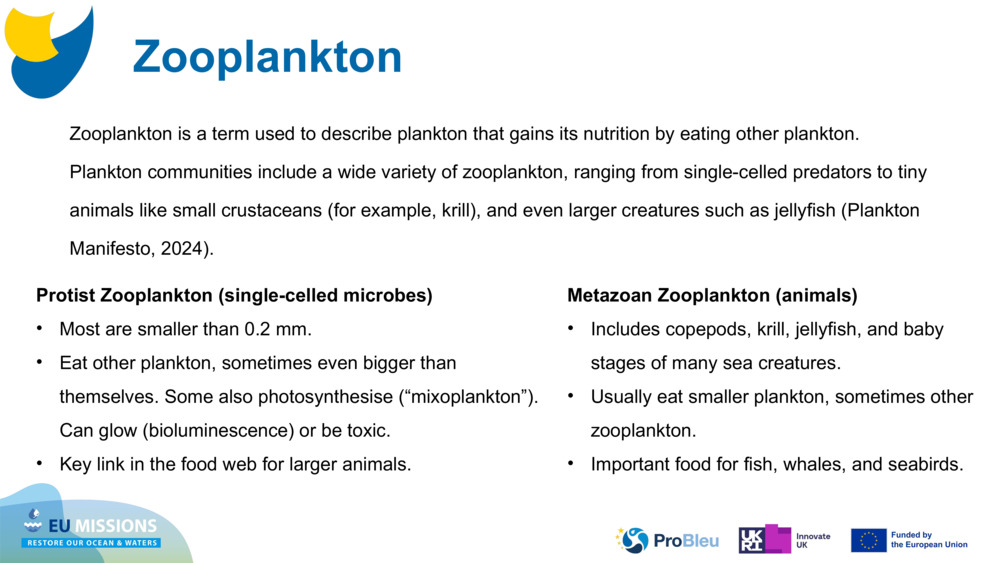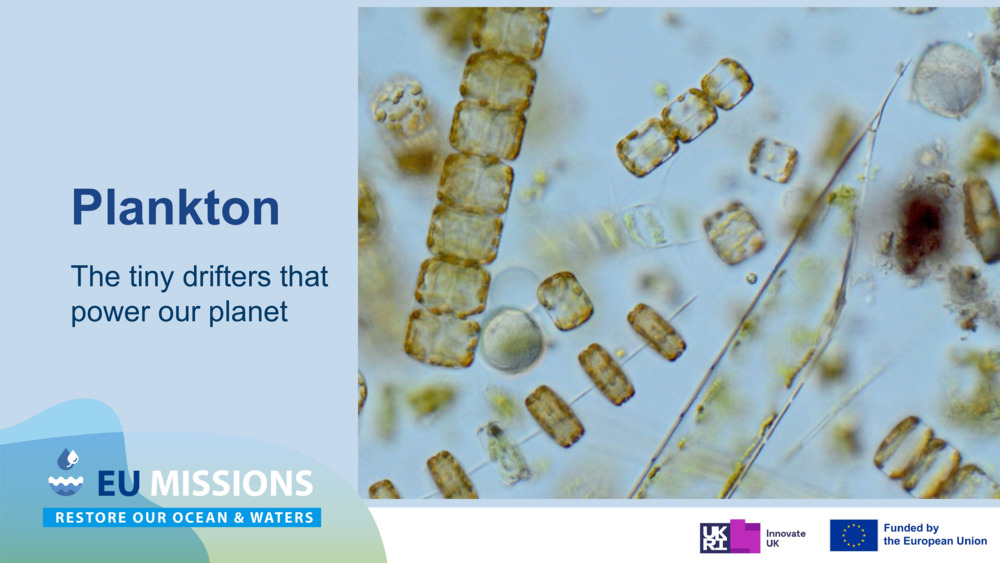Zooplankton
Zooplankton
Zooplankton Zooplankton is a term used to describe plankton that gains its nutrition by eating other plankton. Plankton communities include a wide variety of zooplankton, ranging from single-celled predators to tiny animals like small crustaceans (for example, krill), and even larger creatures such as jellyfish (Plankton Manifesto, 2024). Protist Zooplankton (single-celled microbes) Most are smaller than 0.2 mm. Eat other plankton, sometimes even bigger than themselves. Some also photosynthesise (“ mixoplankton ”). Can glow (bioluminescence) or be toxic. Key link in the food web for larger animals. Metazoan Zooplankton (animals) Includes copepods, krill, jellyfish, and baby stages of many sea creatures. Usually eat smaller plankton, sometimes other zooplankton. Important food for fish, whales, and seabirds.

Original Slide Deck: Plankton: The tiny drifters that power the ocean
Topics: Biodiversity. Ocean Currents. Deoxygenation. Ocean Chemistry. Ocean. Climate. Sustainable Resources. Ecosystem Services.
Suitable Ages: 11. 12. 13. 14. 15. 16.
Keywords: Algae. Aquatic Animals. Bacteria. Biodiversity. Biology. Carbon. Carbon Cycle. Carbon Dioxide. Changing Environment. Climate. Climate Change. Conservation. Contamination. Ecosystem. Environment. Eutrophication. Fertilisers. Food Chain. Habitats. Harmful Algal Blooms (Hab). Hypoxia. Mixoplankton. Nutrient Cycle. Nutrients. Oceans. Organisms. Photosynthesis. Phytoplankton. Pollution. Protozooplankton. Sustainability. Toxins. Zooplankton.
Uploaded By: pml-admin
Number of bundles using this content: 1
Licensed under CC BY 4.0
This content has been used in the following resource bundles:
Plankton: The tiny drifters that power the ocean
Explore the fascinating world of plankton — the tiny organisms that dr...
View Bundle